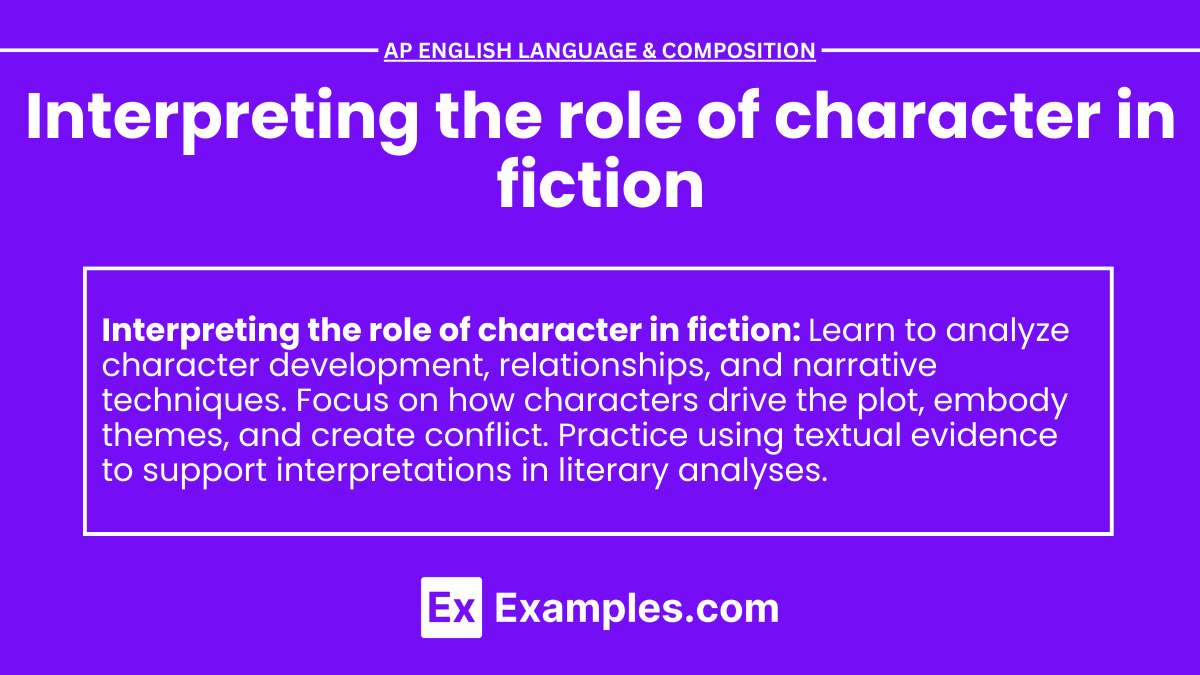In the AP English Language and Composition exam, interpreting the role of character in fiction is crucial for developing insightful and persuasive analyses. Characters drive the narrative, embody themes, and engage readers through their actions and development. Whether engaged in argumentative writing or delivering an argumentative speech, understanding character roles allows you to use rhetorical sentences and cumulative sentences effectively. This skill enhances your ability to critically analyze texts, making your arguments more compelling and well-rounded. By examining how characters are portrayed and their impact on the story, you can provide deeper interpretations and more persuasive literary critiques.
Learning Objectives
By studying the topic of interpreting the role of character in fiction, students will achieve several key learning objectives. They will enhance their critical thinking skills by analyzing character development, relationships, and narrative techniques. Students will learn to use cumulative sentences and rhetorical sentences to create insightful analyses in explanatory essays and expository essays. They will develop the ability to craft a strong final thesis statement that effectively incorporates their interpretations of character roles. Mastery of these techniques will enable students to produce well-structured, engaging, and persuasive literary analyses.
Understanding Character Roles
Definition
The role of a character in fiction refers to their function within the story, including how they contribute to the plot, themes, and overall message of the work.
Types of Characters
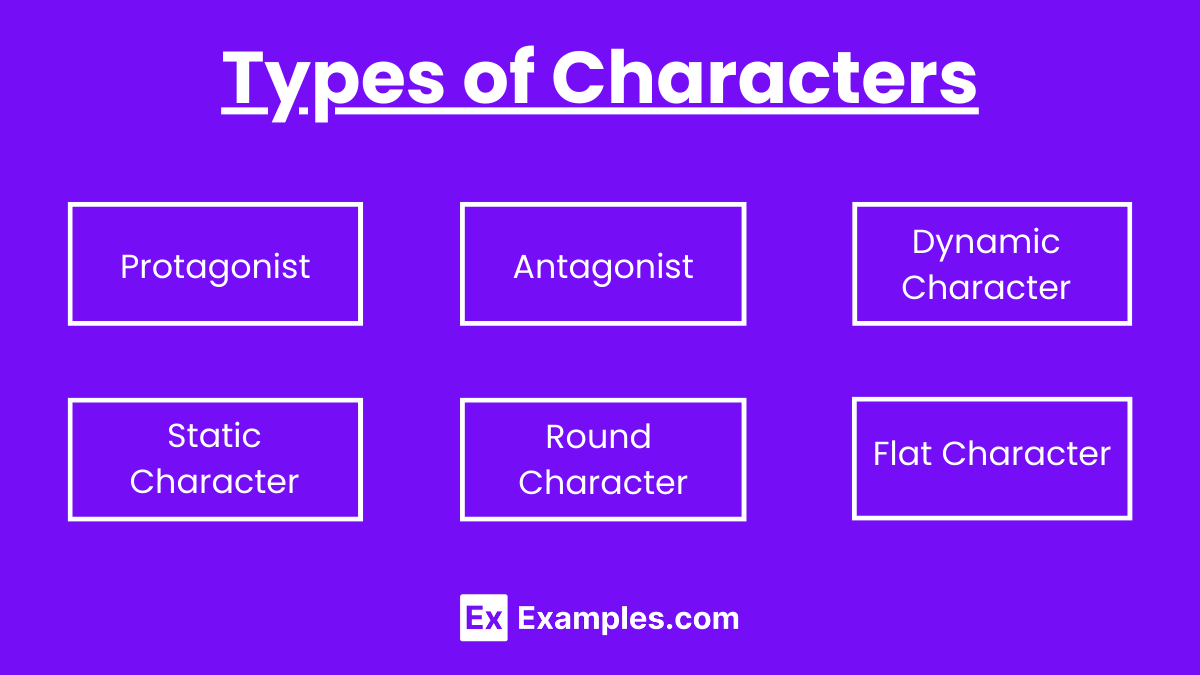
- Protagonist: The main character around whom the story revolves.
- Antagonist: The character who opposes the protagonist, creating conflict.
- Dynamic Character: A character who undergoes significant growth or change.
- Static Character: A character who remains largely unchanged throughout the story.
- Round Character: A complex, multi-dimensional character.
- Flat Character: A simple, one-dimensional character.
Analyzing Character Development
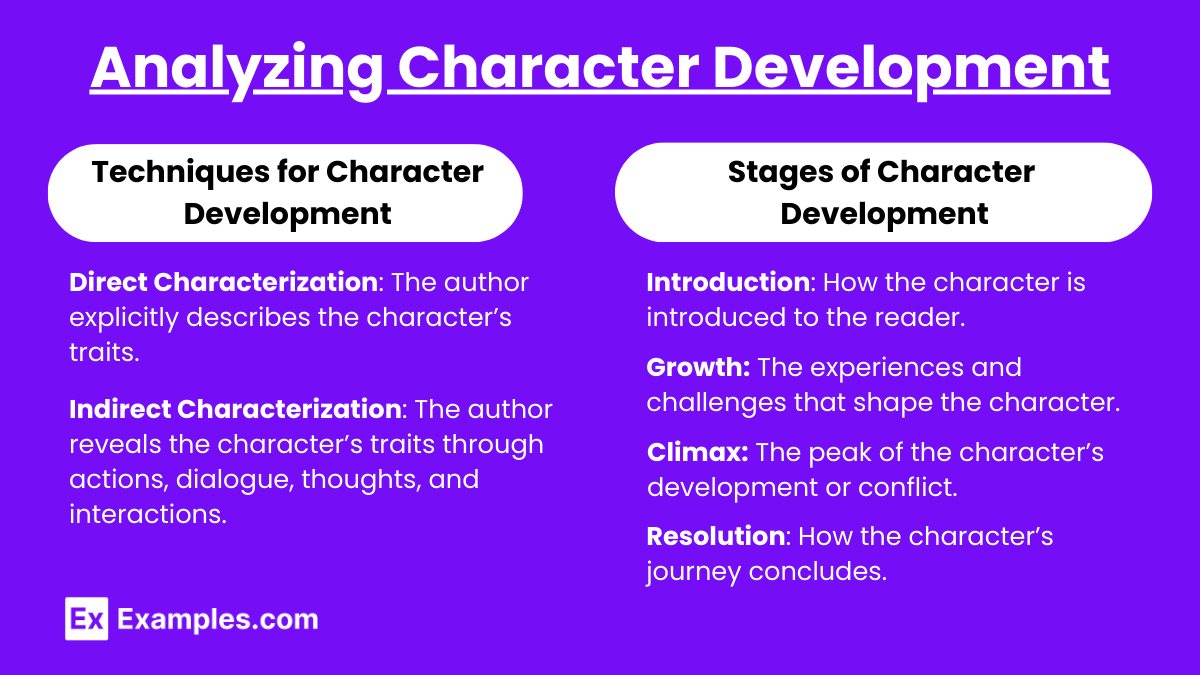
Techniques for Character Development
- Direct Characterization: The author explicitly describes the character’s traits.
- Example: “John was a brave and determined young man.”
- Indirect Characterization: The author reveals the character’s traits through actions, dialogue, thoughts, and interactions.
- Example: John clenched his fists and stepped forward, ready to face the danger head-on.
Stages of Character Development
- Introduction: How the character is introduced to the reader.
- Growth: The experiences and challenges that shape the character.
- Climax: The peak of the character’s development or conflict.
- Resolution: How the character’s journey concludes.
Examining Character Relationships
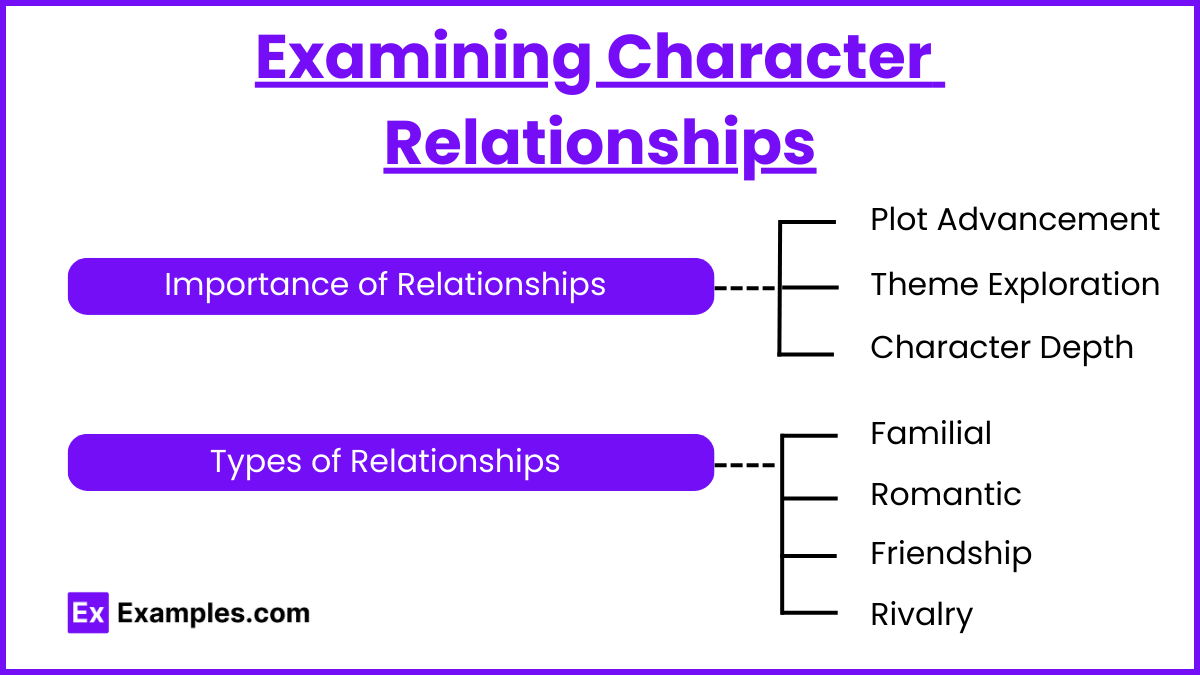
Importance of Relationships
- Plot Advancement: Relationships drive the plot forward through interactions and conflicts.
- Theme Exploration: Relationships can highlight and explore central themes.
- Character Depth: Interactions with other characters reveal deeper aspects of a character’s personality.
Types of Relationships
- Familial: Relationships between family members.
- Romantic: Relationships based on romantic attraction.
- Friendship: Relationships based on mutual affection and support.
- Rivalry: Relationships based on competition and conflict.
Analyzing Narrative Techniques
Point of View
- First-Person: The story is narrated by a character using “I.”
- Example: “I couldn’t believe what I saw.”
- Third-Person Limited: The narrator knows the thoughts and feelings of one character.
- Example: “John couldn’t believe what he saw.”
- Third-Person Omniscient: The narrator knows the thoughts and feelings of all characters.
- Example: “John couldn’t believe what he saw, and neither could Mary.”
Symbolism
- Definition: Characters can symbolize larger concepts or themes.
- Example: A character’s journey may symbolize the quest for identity.
Dialogue
- Function: Reveals character traits, advances the plot, and develops relationships.
- Example: “I’ll never give up,” she said, determination evident in her voice.
Techniques for Effective Character Analysis
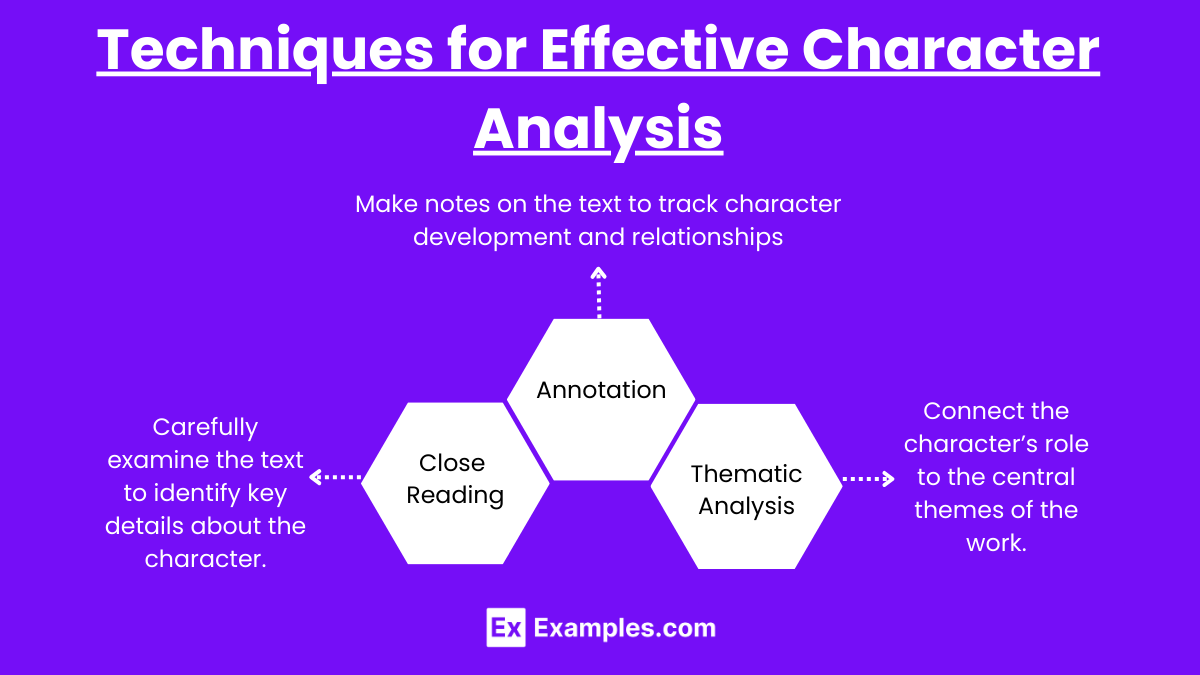
Close Reading
- Definition: Carefully examine the text to identify key details about the character.
- Technique: Highlight descriptions, actions, dialogue, and thoughts that reveal character traits.
Annotation
- Definition: Make notes on the text to track character development and relationships.
- Technique: Write comments in the margins about significant character interactions and changes.
Thematic Analysis
- Definition: Connect the character’s role to the central themes of the work.
- Technique: Identify how the character’s experiences and relationships reflect broader themes.
Examples
Example 1: Analyzing a Protagonist
Character: Elizabeth Bennet from “Pride and Prejudice” Development: Elizabeth evolves from a prejudiced young woman to someone who recognizes and overcomes her biases. Relationships: Her interactions with Darcy, Jane, and Mr. Collins reveal different facets of her character. Narrative Techniques: Austen uses dialogue and internal monologue to develop Elizabeth’s character.
Example 2: Analyzing an Antagonist
Character: Iago from “Othello” Development: Iago’s deceit and manipulation drive the plot and reveal his complex motivations. Relationships: His interactions with Othello, Desdemona, and Cassio highlight his manipulative nature. Narrative Techniques: Shakespeare uses soliloquies and dialogue to expose Iago’s true intentions.

